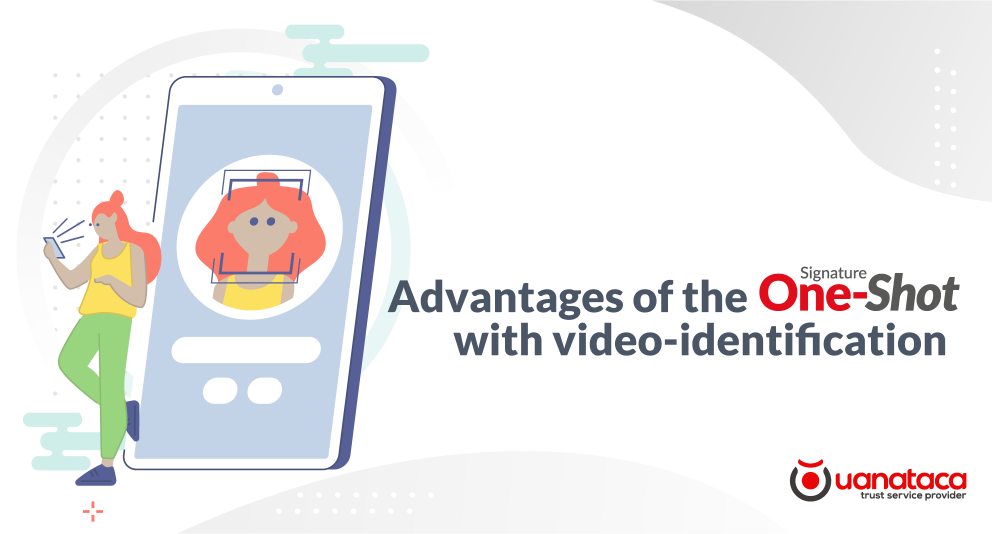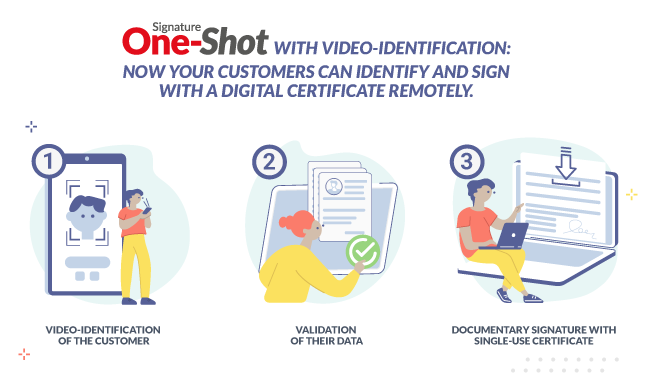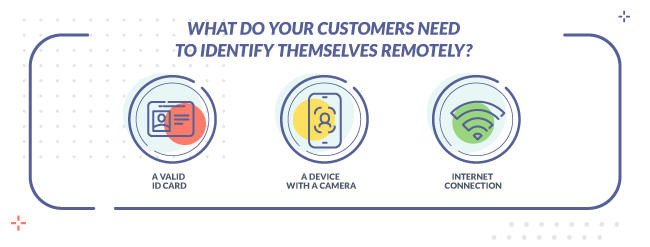

Times of crisis can be understood as new opportunities to undertake structural changes and, in many times, trigger paradigm shifts. In case of measures like lockdowns and mobility restrictions adopted to confront the pandemic, they impeded, for example, that required presential identification for qualified digital certificate issuance could take place.
Addressing this situation, worldwide measures were taken to guarantee citizens access to a legal and safe digital identity. In case of the Spanish Government, an exceptional order was rolled out to allow remote identification over the local emergency state (“estado de alarma” in Spanish), in their seek for preserving rights. At the end of emergency period, the preparation of the permanent Ministerial Order ETD/465/2021 was initiated, a national regulation that covers the entire process of remote identification on video, also known as video-identification.
In this post we will approach to the client video-identification process used for the issuance of single-use digital certificates via One-Shot signature and its advantages.
¿What is video-identification or remote identification on video?
The video-identification is a process that allows the verification and authentication of a person through an online video recording process. This person will simply need its ID document, a device (computer, phone, tablet) with camera and an Internet connection.
As mentioned before, the identification of a person to a Registration Authority has been mandatorily in-person for the issuance of qualified digital certificates. Now, the existence of the new regulation makes possible to remotely verify a person’s identity with the same technical and legal safety offered by face-to-face verification. Unlike this mode, video-identification represents a faster and safer way, easy to access from any place and 100% online, meaning to the costumer a significant save in travel and processing times.
¿How is user identity verified through Uanataca’s Video-Identification system?
With our technology, an Artificial Intelligence system collects all information appearing on the user’s ID document to check against records held by the corresponding official authority. Additionally, the system verifies that the face image of the person being recorded matches with the image that appears on his/her document. This eliminates chances of fraud concerning document forgery or identity substitution.
Supported on its API, the new version of One-Shot Signature exposes a Video ID platform that will work as a user interface. From this, an easy and intuitive process will make possible to sign documents by means of a single-use qualified digital certificate, generated with no need of previous in-person identification.
¿How is the process completed using One-Shot signature with video-identification?

1- Client video-identification
One-Shot Signature through video-identification begins with an Uanataca API call, which allows client access to Uanataca’s Video ID platform to start recording. At this time, the client must show his/her ID document front and rear view to camera for image capturing. From these images, the system extracts the included text lines and sends them to the corresponding official authority for review. During verification period, data like document expiration or age of majority is checked.
The video-identification process continues with the biometric capture, on which the person must show his/her face in front of the camera and then follow a set of instructions. The system, besides comparing the captured face image of the person with the image appearing on his/her ID card, distinguishes between real-human features or somebody not being impersonated and, for example, pre-recorded videos. Based on this premise, particular actions like smiling or blinking are captured. This is known as proof of life.

2- Data validation: the video identification operator
Once the official response regarding the ID information is favorable, the next step begins with a validation of the video-identification result. At this point it is convenient to introduce two important concepts in the process, as they are the assisted and non-assisted identification.
According to what is the established in the regulation, the assistance on the identification implies the immediate intervention of the video-identification operator during a videocall. This person is especially prepared for reviewing the client’s collected information, video, and images, having the authority not only for validation but also for refusal, in case of finding signs of no correspondence or lack of authenticity. On the other hand, non-assisted Video ID also implies a data review and a validation, however, for different reasons, it does not occur simultaneously but afterwards. In any case, a specialized operator will be responsible of data validation as part of Uanataca’s video-identification process.
3- Single-use certificate document signature
Once the signer’s identity is validated and the corresponding approval of the signature request is done by the registration operator, the workflow is completed with the upload of the document or the documents that must be signed for completing a transaction, the exposure of the service contract to the client, the issuance of the digital certificate and lastly, the client’s electronic signature applied.
Benefits of video-identification One-Shot Signature
Considering that video will now provide, as an identification method, the same level of security as in-person identification in terms of reliability, we can assure that One-Shot Signature over Uanataca Video ID offers great advantages to companies and clients:
> Eliminates direct dependency to mobility when allowing to sign from any place, as previous face-to-face identification is no longer required. This provides companies of better expansion possibilities.
> It represents a technological quality step by adding extra value to our user's’offered service as it improves their client’s user experience.

> Permits, by means of the artificial intelligence involved, to prove information not possible to prove in a face-to-face process, or might take the operator a long time to complete, i.e. physical card integrity details.
>The omnichannel process helps its successful execution from any device with camera.
> Signature performance does not entail major changes in systems or business plan, apart from the election and integration to Uanataca’s Video ID platform.
Close transactions instantly from everywhere without spending travel times
With our One-Shot Signature, your clients can remotely identify online and sign using digital certificates without having their own.
